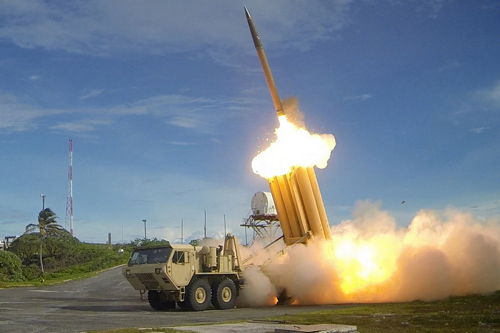
Australia is joining the US and Japan in developing systems for shielding territory from air and missile attack. The news comes as the Department of Defence and Royal Australian Air Force are under pressure to move faster in implementing such a capability.
‘Today, we announce our vision to cooperate on a networked air defence architecture among the United States, Japan and Australia to counter growing air and missile threats,’ Japanese Prime Minister Kishida Fumio and President Joe Biden said in a joint statement this month as Fumio visited Washington.
They also noted that Japan may be able to participate in advanced projects under Pillar 2 of the AUKUS security pact between Australia, Britain and the United States, and that the US, Japan and Australia could collaborate on autonomous air systems, particularly collaborative combat aircraft. Finally, at a US-Japan bilateral level, the statement highlighted joint development of the Glide Phase Interceptor to counter high-end, regional hypersonic threats.
There’s a lot in there for Australia to think about as it moves towards releasing its 2024 National Defence Strategy and an accompanying update to the Integrated Investment Program (IIP). The first thing to think about is integrated air and missile defence (IAMD).
In an earlier article I argued that Australia had fallen behind in IAMD. Last year’s Defence Strategic Review identified the capability gap, noting that a layered IAMD system—comprising a battle management system, command and control network, sensors and interceptor batteries—must be delivered urgently. ‘Defence must reprioritise the delivery of a layered IAMD capability, allocating sufficient resources to the Chief of Air Force to deliver initial capability in a timely way and subsequently further develop the mature capability,’ it said.
Now, the announcement for a US-Japan-Australia partnership will hopefully encourage Defence and the government to prioritise IAMD in the IIP. If Australia is to pursue capabilities for its strategy of deterrence by denial, it must focus on more than strike and power projection. We must hold a shield as well as a sword.
We saw an IAMD system impressively in action on 14 April, when the one wielded by Israel, supported by US, British and French forces, decisively defeated an Iranian attack by long-range drones, cruise missiles and ballistic missiles. Had Israel lacked such a capability, it might have suffered high casualties and extensive damage. Australia should learn the lesson and act quickly.
Australian efforts to develop IAMD capability have dragged on. Lockheed Martin is leading the development of project AIR 6500 Phase 1 which is a joint air battle management system that will sit at the centre of the eventual IAMD capability. It’s a good first step, but the IAMD system must be deployed quickly, rather than be delayed by unnecessarily high performance objectives. The emphasis must be on minimum viable capability, not one perfect system to rule them all (eventually, at enormous cost). That message was in the DSR.
If Australia’s strategic outlook were not rapidly deteriorating, a more leisurely approach to developing IAMD could be justified. But we lack time, with assessments that China could attempt to seize Taiwan as early as the second half of this decade and prompt conflict with the United States.
The quickest and safest path to deploying an operational IAMD capability is by military–off–the–shelf (MOTS) acquisition of the battle management system, command and control network and interceptor batteries. Australia could simply buy a range of systems now available and operationally proven, such as Lockheed Martin’s MIM-104 Patriot and longer-range THAAD. Alternatively, we could improve the short-range NASAMS system that Norway’s Kongsberg is delivering for the army. It uses AMRAAM interceptors but can accept integration of other, farther-flying munitions, such as the AMRAAM-ER with a range of 70km and Raytheon’s SkyCeptor with a range of 200km.
So Australia has a range of MOTS options to choose from. AIR 6500 could progressively evolve from an initial array of MOTS systems, providing a stronger IAMD capability later. Those advances would be important, particularly as the Chinese Rocket Force gains in sophistication.
They could be quickly introduced as part of the trilateral US-Japan-Australia IAMD effort. Japanese cooperation with AUKUS Pillar 2, particularly any that addresses hypersonic threats, might also contribute to bolstering Australian IAMD capability.
Hypersonic threats and the risk of increasingly sophisticated long-range missiles adaptable to both nuclear and conventional attack should also present a requirement for the US, Japan and Australia to work together to counter strategic risks as part of an effort to strengthen US extended nuclear deterrence.

